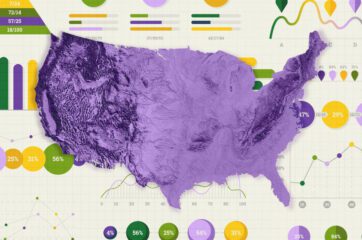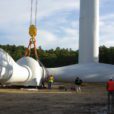The coronavirus outbreak and current pandemic is proving how overwhelming and disruptive health crises can be. While this pandemic is elevating visibility and public concern over public health, there has been another massive issue affecting our communities for decades: pollution and increased concentrations of heat trapping gases in the atmosphere. The climate crisis is indeed a massive global public health crisis, too.
New research shows that smart climate policy, particularly carbon pollution pricing, can have massive positive health impacts. Climate XChange released a new report this week that quantifies the public health benefits resulting from California’s cap-and-invest program, the Western Climate Initiative, which has been in place since 2012. This policy has created benefits that amount to five times the cost of the program. Similarly, Dr. Jonathan Buonocore of Harvard University authored a report proving the health benefits of carbon pricing far outweigh its costs.
Read our report on the public health benefits of cap-and-trade in California here
American Public Health Association’s Rachel McMonagle and Dr. Jonathan Buonocore joined Ruby Wincele of Climate XChange to discuss their findings on the issue of public health as it relates to the climate crisis, and dive into the vast array of public health benefits that carbon pollution pricing can have on local communities.
How does the climate crisis affect human health?
The climate crisis affects human health in a wide variety of ways. Often, individuals do not even draw the conclusion that climate change, or related pollution is a factor affecting their health. Raising awareness about this is a large part of Rachel McMonagle’s position at the American Public Health Association.
McMonagle describes how a longer and hotter warm season caused by rising global temperatures can have severe health impacts, causing heat stroke, which can lead to cardiovascular and respiratory issues, or, in worst case scenarios, death. Extreme rainfalls and drought also have a serious impact on health. According to McMonagle, “just one inch of water that you’re seeing in your basement following an extreme rainfall event can cause mold, and cause much longer-term health impacts, especially for people with pre-existing conditions, such as asthma and different respiratory concerns.”
In many areas, infrastructure for the stormwater and wastewater management that is necessary after large storms is insufficient, which can also lead to the contamination of drinking water.
Vector-borne illnesses are exacerbated by climate change as well — in the U.S., lyme disease has arisen in new areas of the Northeast and Midwest, as ticks are able to populate new locations as temperatures and environments change. This harms the new communities lyme disease is spreading to, as they are not prepared to deal with the disease. Other diseases, such as West Nile Virus and Zika, have also been expanding across the U.S. due to a changing climate.
Increased wildfires impact health in an immediate capacity for those in close proximity to the flames, but can also affect lung health in individuals living hundreds of thousands of miles away from the immediate threat due to the spread of smoke.
Of course, ambient air pollutants, which include pollutants derived primarily from fuel combustion, heat and power generation, industrial facilities, and waste sites, also pose immense health risks. These pollutants carry fine particulate matter, or PM 2.5, which are extremely small particles — so small that 20 of them can fit across the width of a single human hair.
“The reason why we’re worried about these particles is that they are small enough where they’re able to bypass our nose and throat and reach the lungs very easily,” Buonocore says. This allows them to cross the barrier between the lungs and the blood, which can cause drastic health effects, including premature mortality, heart attacks, respiratory and cardiovascular issues, asthma and neurodegenerative diseases such as autism and altheimers. Fine particulate matter also affects our ecosystem, causing acid rain and harming crop growth and timber yields.
These are just some of the many health impacts related to the climate crisis— but this is not an exhaustive list, as human health can be threatened by climate change in many other ways in different locations across the globe.
Climate-related health impacts & social justice
Like many issues of societal justice, health outcomes from pollution and a changing climate have incredibly disproportionate effects on our communities.
Heatwaves and heat stroke, for example, have a disproportionate impact on low-income communities, often lacking green spaces around and in what are known as ‘urban heat-islands’. While most states and countries have legislation that require landlords to supply heating units during winter months, there is little existing policy that requires them to supply cooling units. Communities that cannot afford air conditioning, or the related electricity costs, are at higher risk during heatwaves, and abnormally hot summers.
Rachel McMonagle describes health equity, the idea that everyone has “the right to attain their highest level of health.” But there are historical, societal, racial, and other factors that are directly related to health outcomes in both individuals and communities, which also prevent health equity and severely impact health outcomes.
Climate change is another factor that leads to health inequities, and serves as a threat multiplier, which worsens other factors impacting the health of individuals. These include everything from access to education (if you are unhealthy, you may not be able to attend classes), income (your health may impact your work), safe housing (if the housing you can afford is in an area with high risk to air pollution), and access to proper nutrition (food supply chains are impacted by climate, and access to food is tightly linked to income and place of residence).
In particular, there are four groups that are the most vulnerable to air pollution — older adults, who often have respiratory and cardiovascular issues; children, who breathe more air per unit mass than adults and therefore breathe in greater amounts of fine particulate matter; people who are pregnant, as poor air quality can impact child development; and low-income earners, as they often live in areas that have been overburdened by disproportionate levels of pollution, resulting in often much worse air quality.
Racism, and the systems of power and oppression that have perpetuated race inequities, are a critical factor that determines which communities are hit the hardest by climate change. More than income or class, race is the largest determinant of who lives in close proximity to power plants, and therefore face harmful health effects from the chemicals these plants produce, according to McMonagle. This shows how climate change can be a threat multiplier for communities that already live with discrimination in other capacities.
“Climate change is affecting all of our health, it already is, but it is affecting certain populations worse than others. So if we can build that into new programs we’re outrolling, it can be a really powerful step in building resilience,” McMonagle says.
Carbon pollution pricing, the idea of placing a cap on carbon emissions, is one popular solution that many legislators are considering to tackle climate change. But it must include strong equity components and social justice as a main goal in order to get at the root of the many correlated social and racial inequities that are central to the climate crisis.
“When we think about carbon pricing, we have to think about who is benefiting financially and health-wise, and who is paying the price for these added costs,” adds McMonagle.
Pricing carbon can provide significant health benefits in Massachusetts
While there are many different climate policies that must work in tandem to solve the climate crisis, pricing carbon pollution has proven to have huge public health benefits.
Dr. Jonathan Buonocore studied these benefits by modeling the possible public health effects from Massachusetts bill S. 1747, one of the many carbon pricing bills that was previously introduced in the MA Senate. This particular bill would have set a $10 price per ton of carbon dioxide emitted, which would’ve increased $5 every year until it hit a maximum price of $40 per ton.
Buonocore found that if the bill had been implemented in 2016, between 2017 and 2040, it would have saved 340 lives; avoided 26 respiratory hospitalizations, 28 cardiovascular hospitalizations and 20 heart attacks; and saved $2.9 billion dollars in health costs.
“Most of the CO2 reductions came from reducing the use of fossil gas in building and industry, and reducing the use of gasoline in transportation,” adds Buonocore, highlighting which economic sectors must be addressed through carbon pricing to provide maximum public health benefits.
Buonocore concludes that the health benefits resulting from carbon pricing are immediate — they occur almost right after emissions reductions begin, while climate benefits resulting from the bill actually take much longer to come to fruition. When examining long-term monetary benefits, those around public health actually exceed climate benefits.
Buonocore’s study proves that health benefits need to be an important factor when considering carbon pricing legislation, not only because health benefits are immense, but also because it can help engage larger constituencies and make passing these measures much more likely.
California’s carbon pollution price has yielded massive health benefits
Climate XChange’s most recent report examines California’s cap-and-invest program, which began in 2012, and covers about 85% of the state’s economy. This program is part of the Western Climate Initiative, which links California with Québec in its auction of carbon allowances.
Ruby Wincele, co-author of the report, describes how the program works stating that, “under this cap-and-trade program, major polluters get pollution permits for their emissions, which are also called allowances. Pollution is capped at a certain level of emissions and decreases over time, which limits the supply of allowances.”
45 percent of the funds from California’s carbon price are dedicated to California Climate Investments, which fund programs that further reduce emissions. As of December 2019, over $4.1 billion has been invested in these programs, reducing emissions by 47.5 million metric tons.
“These projects include investing in clean transportation, sustainable communities, energy efficiency, waste reduction, and more,” adds Wincele.
Many of these programs are transportation initiatives that aim to reduce emissions and innovate in that sector — as of November, 2019, $1.7 billion had been invested in projects to curb transportation emissions.
The California program has demonstrated how carbon pricing can truly bring co-benefits to its community. The greenhouse gas reduction benefits have led to $64 saved per ton of carbon dioxide, while the health co-benefits have led to $351 saved per ton of carbon dioxide. Similar to Buonocore’s report, this study shows that the health benefits from carbon pricing are actually greater than the climate benefits. Overall, the co-benefits are 4.8 times higher than the costs of California Climate Investments.
“Reducing air pollution can have massive benefits in communities, especially those that have disproportionately been overburdened by pollution,” says Wincele.
How does this relate to the coronavirus pandemic?
Our world is currently going through a public health crisis that has completely uprooted our traditional way of life in a manner that many experts envision the climate crisis one day will.
Buonocore mentioned that the climate community can learn the importance of collaboration from the current crisis, since it will also inherently require much broader and deeper collaboration in order to scale solutions and new technologies.
“The coronavirus brings an opportunity to remove redundancy for work and open opportunities,” Buonocore says.
McMonagle similarly understands that the current public health crisis can inform how climate leaders begin to tackle this crisis. Because it has highlighted how important and interconnected global public health really is, framing the climate crisis as a health crisis may be a way to engage new people with solutions to the climate crisis as well.
The pandemic has also highlighted the disproportionate impacts our communities face, and how many of us are much more vulnerable.
“[the pandemic] has elevated the effects of different health crises and air pollution on people with pre-existing conditions and respiratory issues,” adds Wincele, who emphasized that in providing solutions to both crises, we must take into account which communities are impacted the most, and the underlying social justice issues that have led to these vulnerabilities.








